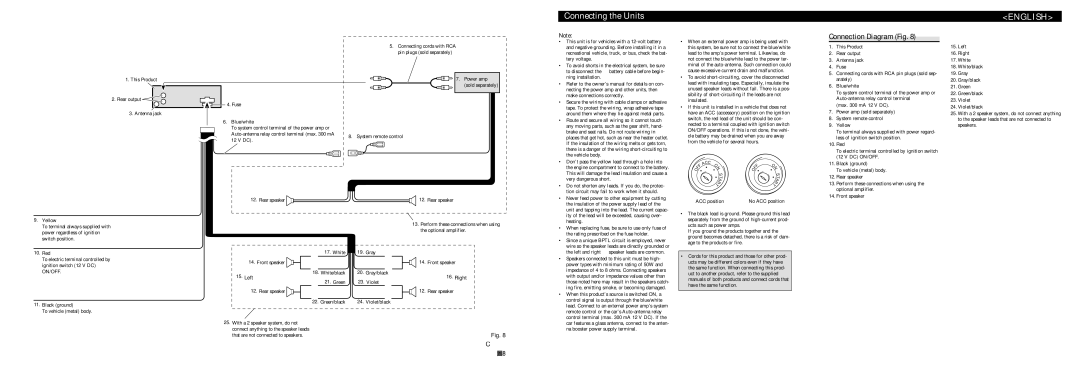DEH-1650B, DEH-1650 specifications
The Pioneer DEH-1650 is a versatile and feature-rich single-DIN car CD receiver that offers a range of technological advancements and user-friendly characteristics. Designed to enhance your in-car listening experience, this model is perfect for music lovers who appreciate high-quality audio and connectivity options.One of the standout features of the Pioneer DEH-1650 is its enhanced audio playback capabilities. The receiver supports various audio formats, including CD, MP3, WMA, and WAV, allowing users to enjoy their favorite music without limitations. The built-in amplifier delivers a peak power of 50 watts x 4 channels, providing sufficient power to drive speakers effectively. Moreover, the 13-band graphic equalizer enables users to customize the sound to their liking, offering precise control over the audio output.
In addition to audio playback, the DEH-1650 comes equipped with a front USB port and auxiliary input, making it easy to connect external devices. The USB port allows for direct playback of digital music files from USB flash drives, while the auxiliary input is perfect for connecting smartphones or other portable music devices. This flexibility ensures that users can enjoy their music collection across multiple platforms without any hassle.
Another notable aspect of the Pioneer DEH-1650 is its user-friendly interface. The large, easy-to-read display provides clear visibility of track information, and the intuitive button layout promotes effortless navigation. Users can quickly switch between sources, adjust volume levels, and fine-tune audio settings without taking their eyes off the road. Additionally, the detachable faceplate adds a layer of security, allowing users to remove the face when leaving the car to prevent theft.
The DEH-1650 also features built-in electronic crossover networks, which provide improved sound quality by directing frequencies to the appropriate speakers. This enhancement ensures that the listener experiences a more balanced and immersive audio landscape. Along with its compatibility with various audio formats and devices, the receiver includes AM/FM radio capabilities with 18 preset stations for easy access to favorite channels.
In conclusion, the Pioneer DEH-1650 is a well-rounded car CD receiver that combines robust audio performance with modern connectivity options and user-friendly features. Whether you’re commuting to work or embarking on a road trip, this receiver ensures a rich and enjoyable listening experience, making it an excellent choice for anyone in search of a reliable car audio solution.

